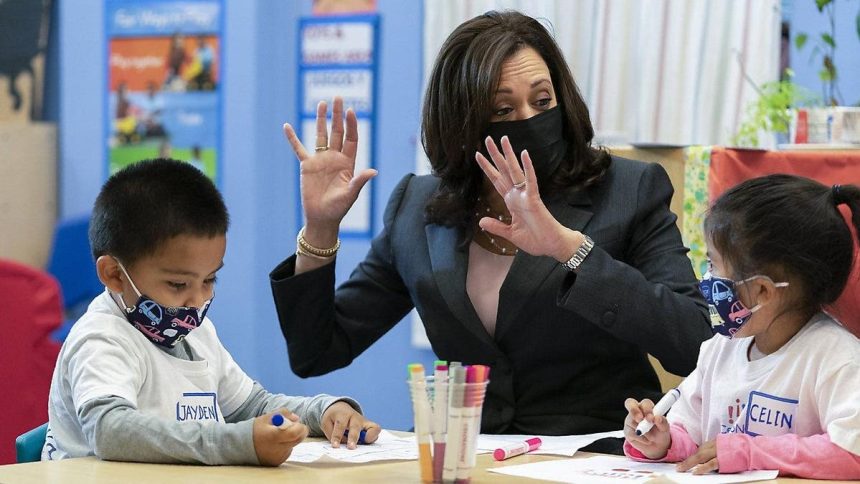September can be a challenging month for parents. For many, the back-to-school frazzle, change in routine, and the frequent viruses and stress that come with the change of season can be a significant test of will. The juggle is undoubtedly real. For the parents of 3.2 million children in the United States, things are about to get a lot worse, as September 30th marks the end of a $24 billion Child Care Stabilization Program. The removal of these funds, initially allocated as a pandemic response measure, will put more than 70,000 daycare centers, preschools, and other childcare centers at risk of closure. The impacts are expected to snowball. A lack of childcare affects not just the safety, nourishment, and early life opportunities of America’s vulnerable children but also the social mobility of low-income families, especially women, immigrants, and people of color who again find themselves caught in the crosshairs of cyclical poverty. We are faced with what has become known as ‘The Childcare Cliff,’ not a new frontier, one many have dangled off for decades and now facing a critical choice. How can we build a bridge and who should we look to, to pave the way?
The Peculiar Economics of Childcare:
Research from the First Five Years Fund has shown that the average annual price of child care in America has increased nearly 220% over the past three decades — considerably faster than food, housing, energy, medical care, and prescription drugs. The average price of center-based care for an infant in the United States is over $13,000, with the annual cost for two children exceeding that of mortgage repayments in 44 states. The childcare industry is at a point of crisis, The economics of which are difficult to calibrate. Care costs are high, yet childcare workers receive low wages. Many centers have no choice but to pass rate increases to parents to stay staffed and afloat. A battle continues between razor-thin margins, increased cost, and subsequent unaffordability, which for many has meant childcare costs make any earning opportunity redundant. This cycle is particularly perpetual for women, specifically women of color. Analysis from the U.S. Census Bureau shows that females are four times more likely to miss work due to Childcare than males, and parents of children five and younger are much more likely to miss work for childcare-related reasons. The impacts hit far harder than the purse strings of households; it has significant effects on businesses and taxpayers. It is estimated that a lack of sufficient and affordable Childcare costs the U.S. economy an estimated $122 billion a year. For many countries globally, investment in Childcare serves as a counter-inflation measure by alleviating household burden and instead increasing disposable income, consumer spending, and adding talent to the labor force. In the USA, investment in Childcare is comparatively meager. According to the Hechinger Report the average childcare spending among comparative nations within the Organization for Economic Cooperation and Development (OECD) is $16,000 per child annually. In the USA it is $500. For a country that prides itself on opportunity, how can we invest so little in the leaders of tomorrow and foster a less equal workforce today?
Not For Lack Of Political Oversight:
There is no hiding behind these numbers. Across the political and corporate gamut, the impacts are known. In a 2021 opinion piece for the Washington Post, Vice President Kamala Harris highlighted the prejudicial effect on women, acknowledging that the economy cannot fully recover unless women participate. She stated, “Without affordable and accessible child care, working mothers are forced to make an unfair choice.” Childcare has been a core pillar of “Bidenomics.” Across government at state and federal level there have been various acknowledgements that affordable childcare is critical to breaking the cycle of poverty. By ensuring America’s most vulnerable children get the best start in life, it can help end systemic poverty, provide social mobility to the underrepresented, diversify the labor force, and boost the economy. As explained by Democratic Rep Jimmy Gomez “This is not about giving a handout; this is about economic competitiveness and keeping our economy going.” A win-win? Yet, it remains a significant issue, fragmented and vulnerable to the whims of political posture and economic trends. The significant question we need answered is, whose problem is it?
Lessons From The Past:
The only justification given for the termination of funds is “the pandemic is over.” Yet this childcare crisis existed long before the pandemic, and lessons from the past are yet again set to be ignored. History has shown that times of considerable societal strife can stimulate positive change in the workforce. The Great Depression and President Roosevelt’s New Deal” deal Social Security, labor protections, and minimum wage. World War II brought the first health insurance benefits in the USA and created various labor protections by establishing the European Union. The pandemic is a similar opportunity to right historical wrongs and create a more equitable future, especially for women. Improved Childcare policies and infrastructure will pay for themselves, acting as an economic catalyst for labor supply via the direct benefit to women, low and middle-income families, and families of color, who have shouldered the cost of policy inaction for far too long. History has taught us that change and growth stem from a shared vision for betterment across a broad spectrum of society. When it comes to childcare, where is the united will? Why can’t this crisis and the pandemic learnings serve as a catalyst for change, reform, and growth?
We have seen the speed at which Global Business leaders are summoned to Capitol Hill to discuss concerns over technology and various policy reforms. Yet such conversation has yet to take place about Childcare. Where is the appetite for shared will or even heightened interest for lawmakers, policymakers, and business leaders in America? With history, economics, and social justice on the side, childcare remains a low-priority issue with no clear policy or plan for the future and instead a looming regression of funds. The answer is this is not viewed as a shared problem. Unlike the historical feats that were seen as a broad societal issue impacting all class and gender, this appears to be an issue for those who bear the brunt, and mainly women. In making it both a women’s and socio economic issue it is passed off as a crisis of commodification. The causation instead rests with the victim, and like so many issues that face women, people of color, and low-income families in America, there is an undercurrent of survival of the fittest. Without shared ownership and public accountability between political and industry leaders, its an age old tale of time and circumstance. Families with the willingness and ability to pay for the commodity of childcare receive it, while those who cannot are left behind. An unfortunate lesson in capitalism in its most basic form. But Americas children and the the battle for equality cannot be passed off as a casualty of commodification. The impacts are too high and the opportunity too fruitful. It’s time for government and industry to come together in joint ownership to create an inclusive growth strategy that includes sustainable investments in Childcare. In doing so, they can bolster a critical sector that is the backbone for economic growth and foster a more equitable society.
Read the full article here









